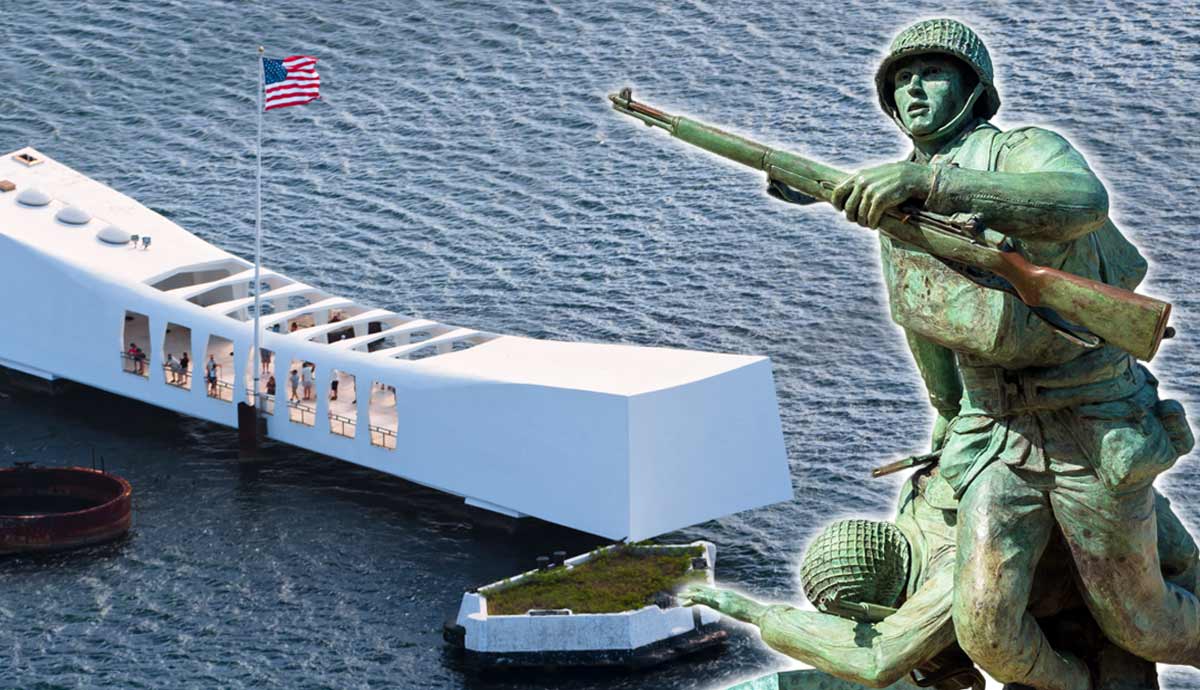
From the Battle of Warsaw in September 1939 to the Battle of Okinawa in June 1945, World War II was thoroughly pockmarked with epic battlefields where the Allied and Axis powers matched might and wits. In the eight decades since, most battlefields have largely been healed by nature or built over by developers. Important artifacts and memorials still remain, however, with some keeping the devastation preserved to remind humanity of the horrors of war. From Europe to Asia and the Pacific, which battlefields can still be visited today, and what can be seen there from history’s most devastating conflict?
1. Normandy Beach

One of the most iconic battlefields of World War II is the site of the world’s largest amphibious (sea-to-land) invasion and where the liberation of France began in 1944. Visitors to the Normandy beaches can see both preserved battlefields and museums of the D-Day invasion. Guided tours are available at both the beaches and in nearby towns, such as Caen. Visitors can see the sites where British, Canadian, and American troops landed on June 6, 1944. Most familiar to people is Omaha Beach, where American troops suffered against fierce resistance.
Visitors to Normandy beach can also see preserved artifacts from the Atlantic Wall fortifications built by the Germans to thwart invasion attempts. This includes preserved German bunkers, from which they fired artillery. Equipment used by both the Germans and the Allies on D-Day can be seen, or learned about as archaeologists and other scientists search for it. Attempts at floating tanks, for example, able to come ashore under their own power after being launched from ships, were not very successful. There are many Normandy invasion historical sites to visit, so planners should be proactive!
2. Okinawa

Although not as well-known as the Normandy invasion, the Battle of Okinawa was one of the most important battles of World War II. Its scope and ferocity allegedly convinced the United States to use the atomic bomb—originally developed for use against Nazi Germany—instead of an invasion of the Japanese home islands. Today, visitors can see many memorials to the battle, most appealing to the need for peace, as well as preserved wartime infrastructure. One preserved site is the underground naval headquarters of the Japanese military on Okinawa, with exhibits including English translations. Several monuments to those killed during the three-month battle, totaling up to a quarter-million Japanese and Americans combined, have been built.
While visitors can see famous landmarks from the Battle of Okinawa, which raged between April and June of 1945, there are not as many museums or preserved wartime infrastructure and equipment as in Europe. This difference is likely due to how World War II is treated and remembered by Japan in contrast to how it is treated in Germany. While Germany has shown significant remorse for its Nazi past, Japan has had a less overt reckoning with its imperial era. Part of this was political, due to the US allowing Emperor Hirohito to remain on the throne after the war.
3. Stalingrad
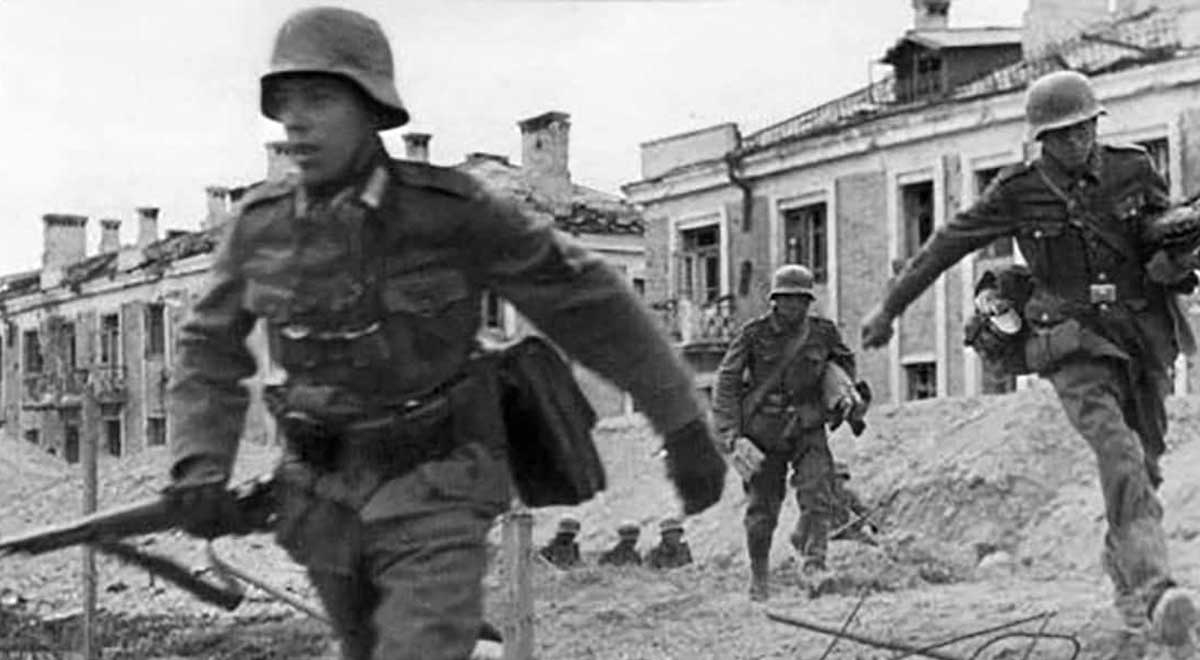
Many consider the Red Army’s victory at Stalingrad in January 1943 to be the “turning point” of World War II, shifting the momentum from the Axis powers to the Allied powers. The Battle of Stalingrad is also one of the largest battles ever fought, with up to two million combatants engaged over the course of several months. It is the largest urban battle in history, with intense combat between the German Wehrmacht and the Soviet Red Army. Up to half a million civilians were still in the city at the end of the summer of 1942 when the Wehrmacht approached.
Museums in Volgograd, the post-1961 name for Stalingrad, commemorate the Soviet victory and contain many preserved pieces of equipment. Visitors can choose from many battlefield tours, which cover numerous sites in and near the city. One of the most famous memorials in the world, the Mamayev Kurgan Memorial Complex, is dedicated to the historic battle. A famous battle site is Pavlov’s House, an apartment building converted into an ad hoc fortress by Soviet defenders, who held out for two months against a German siege before being relieved.
4. Ardennes Forest (Battle of the Bulge)

The largest battle fought by the United States during World War II is known as the Battle of the Bulge. Its more formal title is the Ardennes Offensive, so named for the German thrust through the forested Ardennes region of Belgium. On December 16, 1944, Nazi Germany launched its last organized offensive on the Western Front in Europe in an attempt to split the American and British armies in France and recapture the port city of Antwerp, Belgium. The Allies were pushed back temporarily, creating the “bulge,” but held the front. By the end of January 1945, the bulge was erased, and the Allies resumed their push into Germany.
Many museums have been established to commemorate the individual battles of the Ardennes Offensive, especially the Siege of Bastogne, where trapped Americans held out against a surrounding German force. Numerous tours are offered as well, including ones that mix contemporary Belgian and French sites with historic battle artifacts. Today, historians use sophisticated equipment like drones to map out battle sites, detecting foxholes and equipment even 80 years after the fighting ended.
5. Pearl Harbor, Hawaii
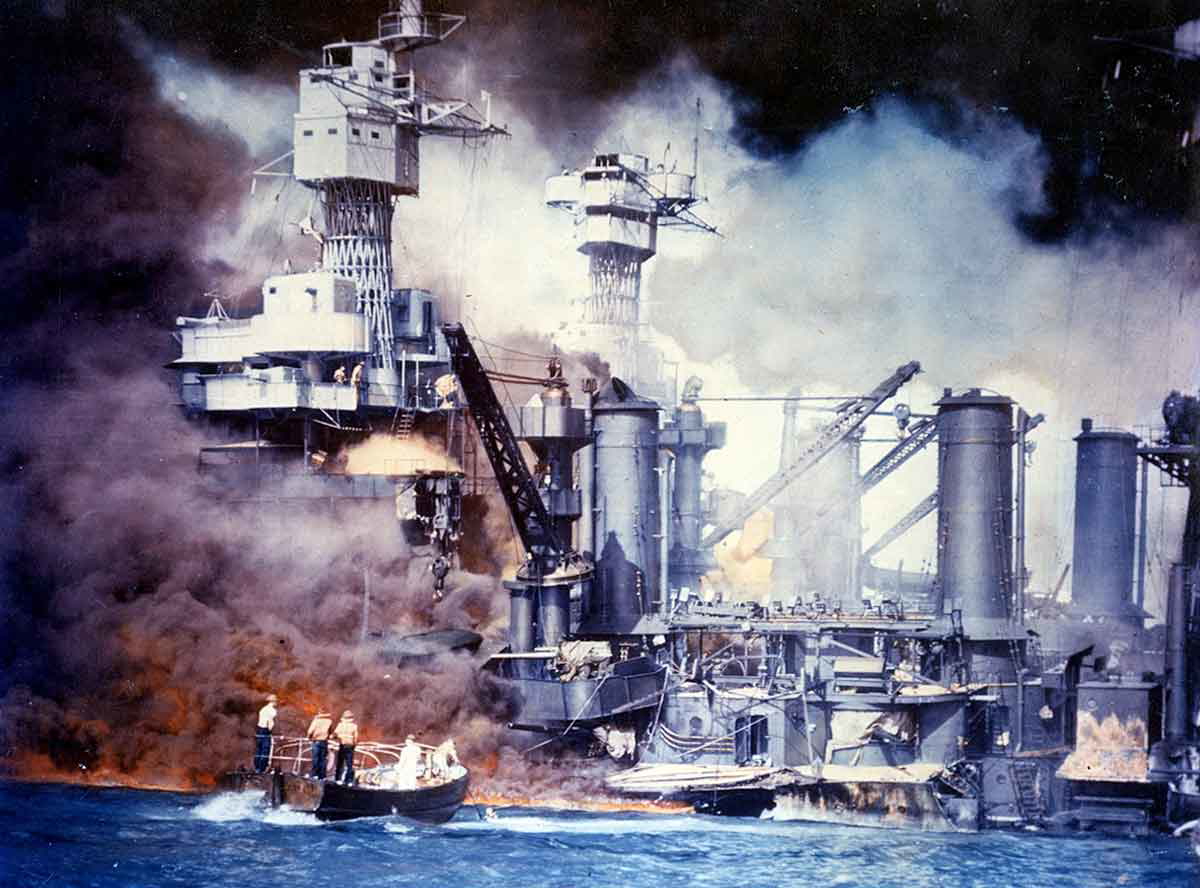
This surprise battle brought the United States into World War II, and is the only World War II battle to be fought in an American state. Today, visitors to Hawaii can go to the Pearl Harbor National Memorial, which is part of the National Park Service. Perhaps most notable is the USS Arizona Memorial, which is located at the site of the sinking of the famous battleship. Boats ferry visitors to the offshore memorial, which sees four to eight thousand visitors per day. Several memorials in and near Pearl Harbor, Hawaii, pay tribute to the approximately 2,400 Americans who lost their lives on December 7, 1941.
Museums near the battle site also provide important knowledge and context, such as the Pacific Aviation Museum. Visitors to this museum can ascend to the top of the Ford Island Control Tower, which allows them to see the entirety of Pearl Harbor. The museum also includes restored World War II aircraft, including a Japanese Mitsubishi Zero, which was one of the types of aircraft attacking naval vessels at Pearl Harbor. The Zero’s unexpected speed made it a formidable weapon, but American defenders were still able to shoot down 29 Japanese planes during the battle at Pearl Harbor.
6. Warsaw, Poland
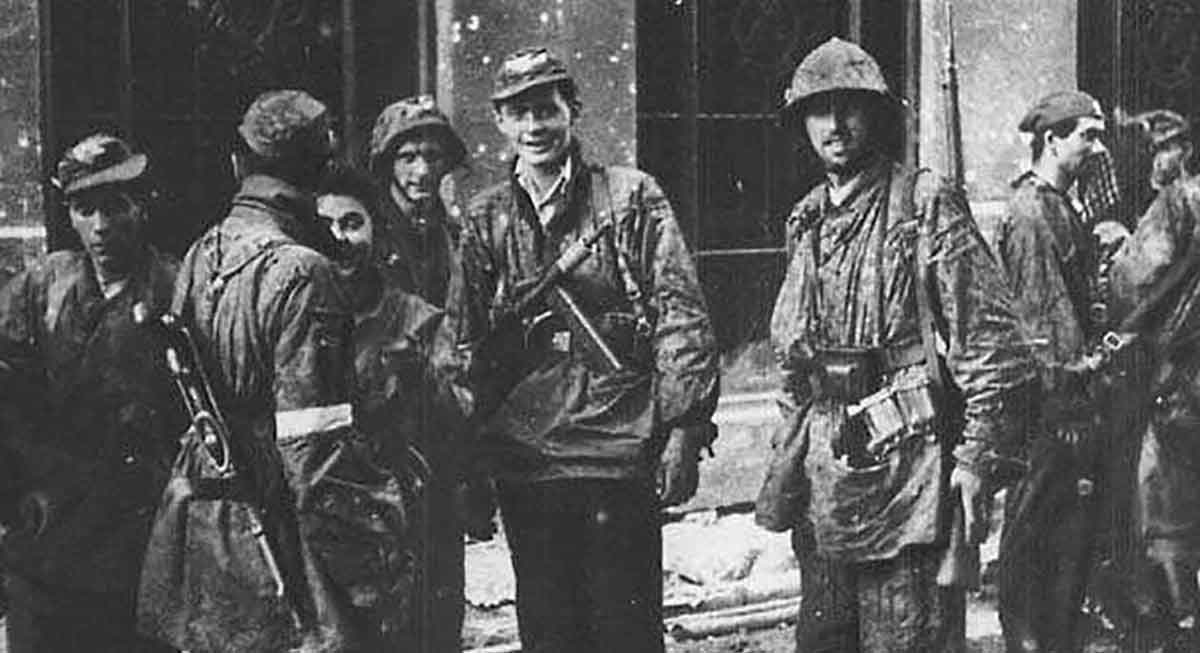
World War II in Europe began on September 1, 1939, when Nazi Germany invaded Poland. A few weeks later, the Soviet Union invaded from the opposite side, crushing the independent nation. For more than five years, the capital city of Warsaw was occupied by the Nazis, creating numerous historic sites of Germany’s wartime administration. Many museums and memorials exist regarding the occupation, persecution of Polish government and political figures, and the Holocaust. The Warsaw Ghetto, which forced Jews into cramped and squalid conditions, was the site of the city’s largest battle.
In both 1943 and 1944, major uprisings rocked the city, and visitors can see historic sites from those events. Jews in the Warsaw Ghetto rebelled in April 1943, with intense fighting in Muranowski Square, which can be visited today. The Warsaw Ghetto Uprising was crushed, and the ghetto was liquidated by early May. Fifteen months later, a larger uprising occurred across the city with the Warsaw Uprising. This widespread uprising, led by communist resistance fighters, took two months for the Germans to suppress. A large monument to the uprising can be visited today in Krasinski Square.
7. St. Petersburg, Russia (Siege of Leningrad)

Beginning in September 1941, during Operation Barbarossa, the German Wehrmacht began to encircle the Soviet city of Leningrad (now St. Petersburg). Unable to take the city, the Germans besieged it, hoping to starve it into surrender. This began an almost 900-day siege, which ended in January 1944 when the Germans were finally driven back. A three-day tour of events of the siege can be purchased, with the second day showing visitors combat sites in and near the city of Leningrad.
A museum and memorial can be visited today, which has been reduced in size from a massive haul of captured German equipment at the end of the siege. The current museum was reopened in 1989, and visitors can request translators for group tours. Around the city of St. Petersburg, some damage remains unrepaired as a reminder of the brutality of the war. Other damaged sites, such as the palaces of St. Petersburg, were fully repaired. In Europe, many cities subjected to German bombing or shelling keep some buildings unrepaired as a reminder of the horrors of war.
8. Manila, Philippines

Perhaps the most brutal urban warfare experienced by the United States during World War II came during the liberation of Manila, the capital city of the Philippines. The Japanese had captured the Philippines almost three years earlier, resulting in the horrific Bataan Death March for American and Filipino prisoners-of-war. Famously, US General Douglas MacArthur vowed to return to the Philippines, which had become a US colony after the Spanish-American War, and did so in October 1944. The Japanese refused to surrender and turned Manila into a fortress, which resulted in the loss of over 1,000 American and Filipino troops in their efforts to retake the city.
Visitors today can see the largest foreign cemetery of US soldiers (the Philippines was granted independence in 1946). Tours cover the numerous World War II battles over the entire island nation, including Japan’s 1942 offensive and America’s 1944-45 recapture. The Manila American Cemetery and Memorial includes exhibits related to the Battle of Manila, which lasted from February 3 to March 3, 1945. Freedom Plaza in the city contains the twenty-foot Liberation of Manila Monument, which honors the struggles of the city and its liberators. Along with Berlin, Warsaw, and Stalingrad, Manila faced almost total destruction during the course of Japanese occupation and liberation.
9. Guadalcanal

The American ground offensive in the Pacific Theater began in August 1942 on the island of Guadalcanal, only eight months after Pearl Harbor. US Marines quickly secured Henderson Field for American air traffic after conducting America’s first major amphibious landing, but jungle warfare loomed across the rest of the island. Brutal combat took until February 1943 to dislodge the Japanese from Guadalcanal, scoring the first victory of the Allied island-hopping campaign. During the six months of fighting, almost 1,600 American troops were killed and thousands more wounded.
Visitors can take tours of the island of Guadalcanal today, which include memorials to both American and Japanese troops and landmarks of intense combat. Specifically, the Guadalcanal American Memorial commemorates the beginning of the Solomon Islands Campaign to liberate the islands. Every August 7, dedication services and wreath-laying ceremonies are held on the beaches near the sites of wrecked landing equipment to commemorate the beginning of the liberation. Visitors can see remains of military equipment across the island, as well as visit the beaches where the first US Marines landed on August 7, 1942.
10. Berlin
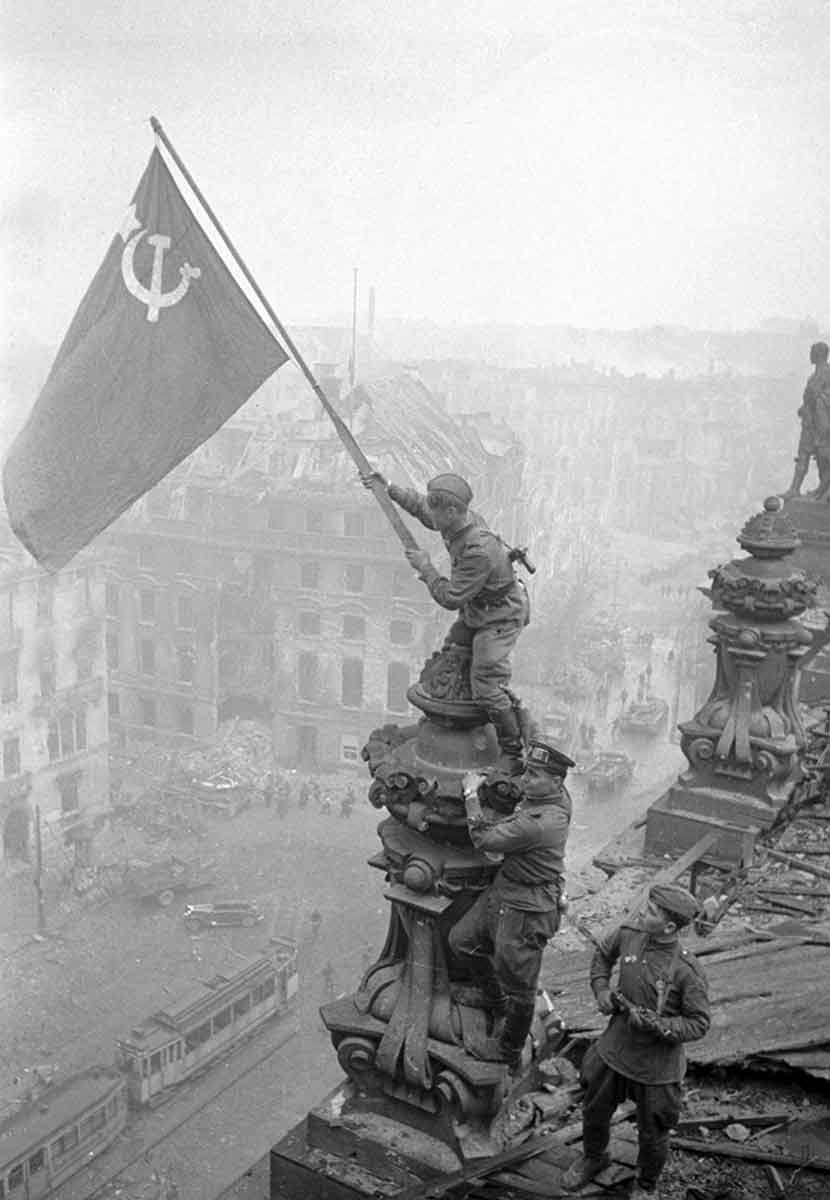
After almost two years of strategic retreat on the Eastern Front against the Soviet Red Army, the German military was pushed back into its own capital city of Berlin. Rather than surrender the city, dictator Adolf Hitler chose to defend it against overwhelming odds. The resulting Battle of Berlin, which raged until early May 1945, left most of the city in ruins. As a result, visitors eager for World War II history will find a tremendous number of battle sites. There are also countless sites related to the infamous Nazi government and military, as Berlin was their headquarters.
Many tours operate, taking visitors throughout the city to show the sites of the colossal battle. In addition to walking and driving tours, visitors can see museums dedicated to the Battle of Berlin and German military history. One museum is dedicated to the German Resistance against Hitler’s regime, much of which played out in Berlin itself. Essentially, the German capital is thoroughly dotted with battlefield sites, museums, and memorials. For any aficionado of World War II, Berlin is a must-visit city. During the Cold War, its location behind the Iron Curtain—and split by the Berlin Wall between 1961 and 1989—added even more military history.










